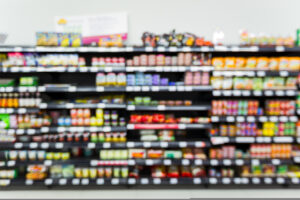Gas prices are at an all-time high and it seems as though they will continue soaring as the summer is upon us. The national average has finally made its way above $5.00. The price of gas doesn’t solely depend on cost per barrel of crude oil, but at $119 a barrel it’s certainly not helping. What you pay for gas also depends on supply and demand and the increase in travel during spring and summer always impacts the price of gas. And of course, the Russia/Ukraine war isn’t helping either. So, we’re not likely to see prices come down for a while yet and the cost will continue to be passed on to the consumer.
Consumers at the pump
Anyone commuting to a job dreads the day they head to the pump. At $5 a gallon, whether you’re driving a Honda Civic or a Ford F-150, you are scrounging up $60 to $115 every time you fill up. It’s a heavy-duty payment. Even worse, gas stations with increasing prices have little incentive to decrease prices as their cost goes down. Most gas stations will keep their gas at higher prices to hedge against the volatility of the current market due to the Russian/Ukrainian War and to make up for lost margin when they were slow to react in March. This is obviously the direct impact of the price increase; one felt every time someone pulls up to the pump. But the price increase is hitting our wallets in more than one way.
Retail Prices
Target announced recently that transportation and freight cost increases will cost the company upwards of $1 billion and their shares dropped more than 25% last week. Walmart has a similar sentiment reporting that fuel ran $160 million higher for the quarter than expected. Retail stores will have to decrease inventory and raise prices to counteract these unprecedented increases in price that will hurt their bottom line. Unfortunately, the consumer will see that on their receipt.
Food Prices
Most of your food starts somewhere on a farm. Farms rely heavily on diesel. Farm fuel has gone up more than 100% since last year. The increase will heavily impact the price of corn and grain. You might think, “maybe I can avoid buying bread and corn.” But corn is used to feed chickens, corn is used to make vegetable oil, grain is an ingredient in almost every snack on the shelf, including every Frito, Dorito, and Tostito. Almost everything you buy at the grocery store starts off somewhere on a farm. Which then must be harvested by a combine using diesel, transported to a factory, then transported to a supply center, and then transported to a grocery store where you will drive your car and pick it up. The gas price is going to affect every single one of these stages, potentially driving our grocery bills through the roof. Grocery store bills are up 14% since last year and consumers are already looking to cut costs, because they are spending more on gas each month.
Air Travel
Jet Fuel prices are nearing 14-year highs and although airlines have said that increased demand for flights should offset these skyrocketing jet fuel prices, fares have continuously gone up. Fares rose by 55% since January 2022, according to the Consumer Price Index, outpacing inflation. This affects a business’ desire to have their employees fly. It also affects the vacation industry and people’s willingness to spend on flights.
Public Transportation
Public transportation is one industry that may end up benefiting from increased gas prices as people search for cheaper ways to commute to work. But, on the other hand, school districts looking at ways to decrease costs may end up cancelling transportation for after school events and scaling back bus routes. Meanwhile, more parents are putting their kids on buses to avoid having to drive to school themselves, bus companies are looking for higher contracts to continue functioning and every district can’t afford to switch to more fuel-efficient vehicles. In one way the gas helps the public but what is giveth can also be taketh. While the public may benefit from increased use of public transit, they may also lose some use of public-school buses.
Are There Really any Winners?
Well, probably not. Even though refineries are making more money now, that will all come back to normal at some point. The complexity of the gas price increase leads us to believe that it will take longer for the price to come down than it took to go up. Most Americans were saving money this time last year, while this summer, people are putting more on credit than ever. Every dollar we spend on gas is a dollar we’re not spending elsewhere.
Consumers are cutting costs but how do they make these decisions? What are their necessities and does your product make the cut? Some businesses will struggle to survive with inflation, especially small businesses with less margin for error. If you can understand how to weather the storm, your business will come out the other side stronger than ever. People rely on consistency when they are struggling and want to know they CAN afford what they NEED.











